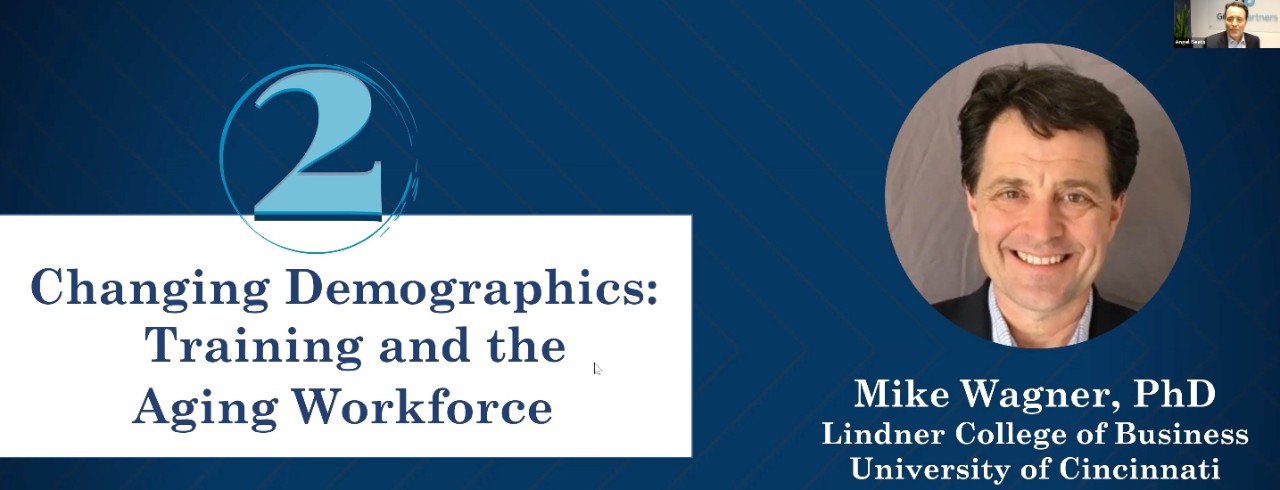
Older workers are just as capable as younger ones
UC professor encourages businesses to look beyond stereotypes
Employees 65 and older, who make up the fastest growing group in the United States workforce, are just as capable at learning new technologies as younger workers when they’re given the proper training, University of Cincinnati assistant professor Mike Wagner said.
Wagner, the director of the Master of Arts in Human Resources program in UC’s Carl H. Lindner College of Business, was one of seven speakers featured at an event presented by Gilman Partners, a Cincinnati executive search, talent acquisition and leadership development firm. Each presenter spoke for seven minutes via Zoom to more than 100 business professionals about attracting, retaining or developing talent.
Wagner’s presentation focused on training and the aging workforce, a topic that’s gaining importance as America’s population gets older. From 2006 to 2016, the number of people 65 and older in the U.S. grew from 37 million to 49 million. By 2060, that number is expected to approach 100 million.
Older workers are just as capable and just as willing to learn new technologies as people in other generations.
Mike Wagner Director of the Master of Arts in Human Resources Program in UC’s Carl H. Lindner College of Business
Those older Americans are remaining in the workforce longer, but often their abilities are underestimated because of stereotypes, Wagner said.
“The research shows that this group of people, age 65 and older, very often are passed over for training opportunities in the workforce,” he said. “And this is because of stereotypes that people have of them — that they’re technophobic or they’re inflexible or they’re not adaptable. Another thing that the research shows is that these are just stereotypes. Older workers are just as capable and just as willing to learn new technologies as people in other generations.”
Older people do tend to be lower in “self-efficacy,” or an individual’s belief in their own capacity to perform a specific task, Wagner said. Employees can gain self-efficacy, though, regardless of generation, by learning from role models, through verbal encouragement and from previous successes, Wagner said.
“Self-efficacy just on its own helps people to do better on their task,” he said.
Next Lives Here
The University of Cincinnati is classified as a Research 1 institution by the Carnegie Commission and is ranked in the National Science Foundation's Top-35 public research universities. UC's undergraduate, graduate and medical students and faculty investigate problems and innovate solutions with real-world impact. Next Lives Here.
Related Stories
UC-linked startups blaze trails as Cincy Inno Fire Awards...
May 5, 2025
Seven of the 22 finalists for the Cincy Inno Fire Awards have connections to the University of Cincinnati. We’ll run through each of these trailblazing startups.
UC celebrates record spring class of 2025
May 2, 2025
UC recognized a record spring class of 2025 at commencement at Fifth Third Arena.
CCM welcomes new viola faculty member Brian Hong
May 1, 2025
UC College-Conservatory of Music Dean Pete Jutras has announced the appointment of Brian Hong as CCM's new Assistant Professor of Viola. His faculty appointment officially begins on Aug. 15, 2025. Hong has established a notable career as a critically acclaimed performer, inspiring pedagogue and successful music administrator. As the violist of the GRAMMY-nominated Aizuri Quartet from 2023-2025, he premiered major new works on nationally renowned chamber music series and conducted residencies at universities across the United States.
